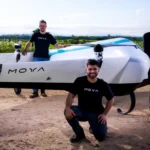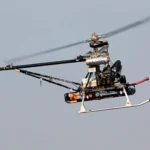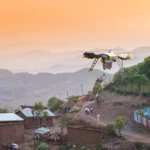Renew or die, this is the phrase that sums up the fate of thousands of manned aerial platforms around the world, especially for military use, who until now, having met the maximum number of flight hours allowed, were discarded. It does not matter if it is a military helicopter, a light aircraft or a large cargo aircraft, until today its destination was always the same, destruction.
Fortunately today a halo of hope has emerged for these military helicopters that refuse to accept their obsolescence and it is that with the exultant emergence of autonomous unmanned platforms (UAVs) and advanced autopilot systems, the conversion of these platforms, once manned, into autonomous unmanned vehicles equipped with the latest technology.
An adequate renovation of these military helicopters allows their conversion into UAVs, thus extending their useful life. Thanks to the versatility of autopilots for UAVs, this conversion can be done in a few weeks, easily making the investment needed to convert military helicopters into UAVs profitable.
Veronte Autopilot in the conversion of manned to unmanned vehicles
The redundant Veronte Autopilot 4x, manufactured by Embention, has today enabled the conversion of multiple manned to unmanned aerial vehicles around the world. Advanced navigation systems together with the redundancy of the autopilot components are key aspects for the intensive use of these platforms under all guarantees of quality and reliability. In addition, the Veronte Autopilot is designed under the aviation standards DO178C and DO254, which allow to ensure the reliability of the hardware and software in the redundant autopilot for certification against the most demanding aviation authorities.

Embention has a large team of aerospace engineers, experts in this field. These are the ones who carry out the conversions from start to finish, or supervise the work of their clients’ engineers, in order to guarantee the best possible result. The conversion process is relatively simple, being the main components to install the autopilot, the actuators (servos or linear actuators) and the communications system.
The Autopilot acts as the brain of the system, being in charge of executing GNC (Guidance, Navigation and Control) tasks to give military helicopters a new life. The control can be remote, from a ground control station (UAV), or through Fly-By-Wire control, allowing to have a pilot on board (OPV). The actuators allow the autopilot to control the movement of the control surfaces. In those cases where you want to maintain the ability of piloted flight in the vehicle, it is possible to install servos for OPV, these have a clutch that allows their disconnection for manual control.
Converting retired military helicopters to drones is a second chance for these vehicles. This small investment maintains the usefulness of the platform for many more years, thus allowing a new life.




